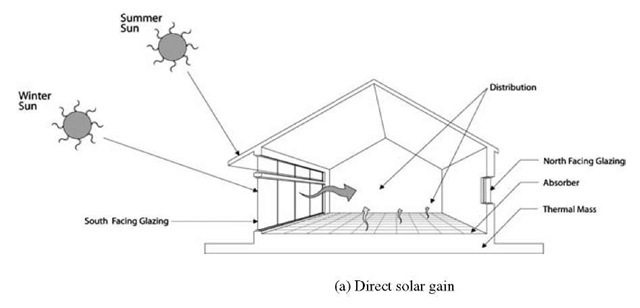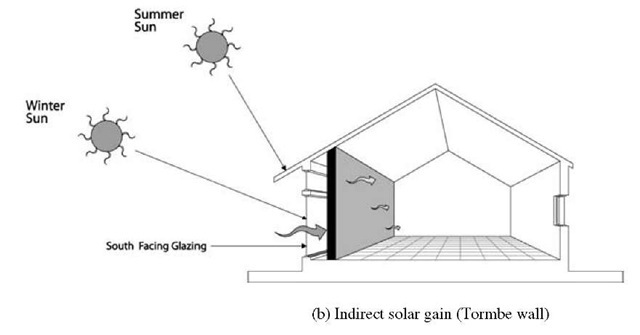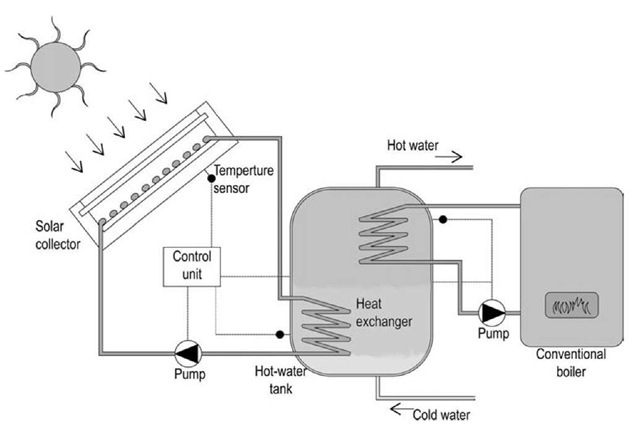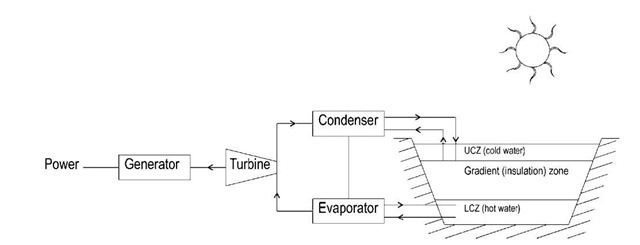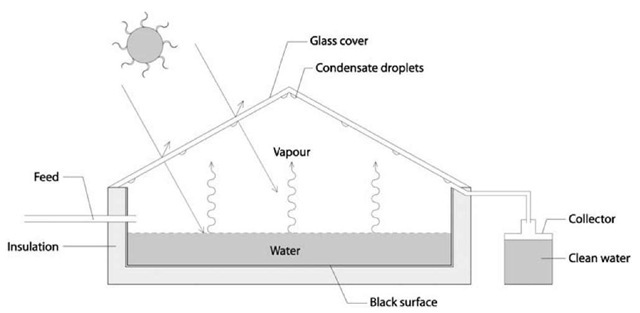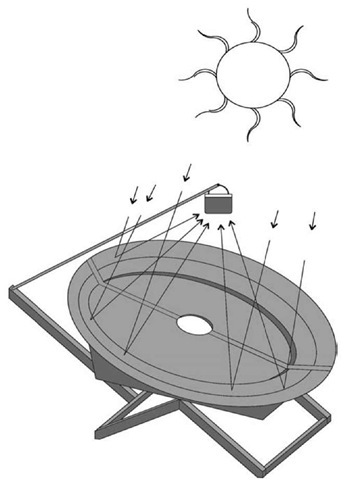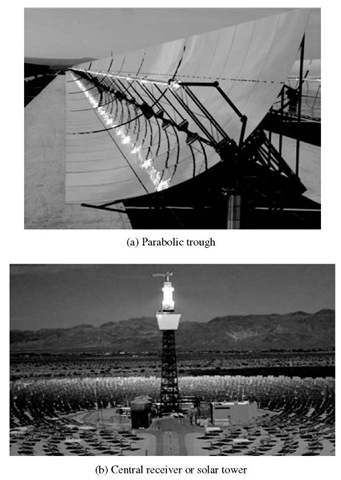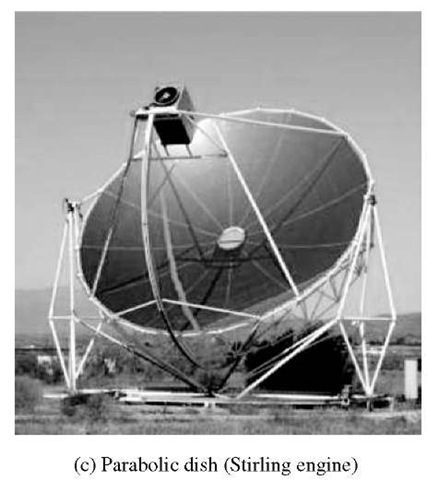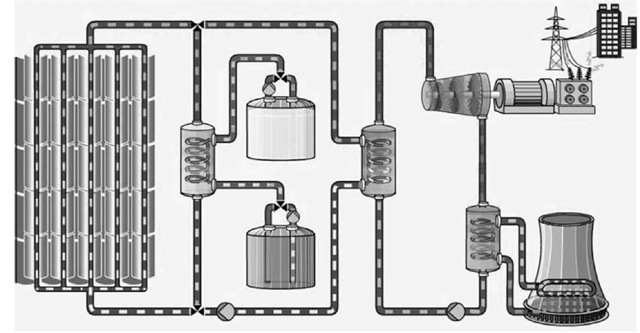Abstract
Solar thermal technologies are amongst the most diverse and effective renewable energy technologies. They range from low-temperature (< 70°C) and simple in operation technologies such as solar space heating and solar cooking to high-temperature (> 200°C) and sophisticated ones like solar air conditioning and solar thermal power generation. Solar thermal technologies, similarly, have a broad economic bandwidth amongst them. The most successful application of solar thermal technologies so far has been in the form of solar water heating. In this entry, a brief overview of the prominent solar thermal technologies has been presented in which the technology fundamental and operational principles of these technologies have been precisely discussed.
INTRODUCTION
The sun is a source of energy on Earth, and in a sense, it is a source of life; as energy is the most important commodity for life besides providing light and heat to the planet. The reaction between the sun’s energy and Earth’s atmosphere determines weather patterns and rainfall, and Earth’s tilt towards the sun creates the seasons. Its role in photosynthesis helps plants to grow and its role in biodegradation helps complete the natural cycle of ecosystems. The sun also sources several other forms of energy on the planet: wind power depends on the sun’s impact on atmospheric movement as it creates wind patterns; through photosynthesis, sun contribute to bioenergy (wood and other organic materials); and fossil fuels indirectly owe their creation millions of years ago to solar energy.[1]
Solar energy is one of the most promising renewable technologies. It is abundant, inexhaustible, environmentally friendly, and widely available. Solar energy has the potential not only to play a very important role in providing most of the heating, cooling, and electricity needs of the world, but also to solve global environmental problems. Solar energy can be exploited through solar thermal and solar photovoltaic (SPV) routes for various applications. While SPV technology enables direct conversion of sunlight into electricity through semiconductor devices called solar cells, solar thermal technologies utilize the heat energy from the sun for a wide range of purposes.
Solar thermal technologies are quite diverse in terms of their operational characteristics and applications—they include fairly simple technologies such as solar space heating and solar cooking as well as complex and sophisticated ones like solar air conditioning and solar thermal power generation. Solar thermal technologies have also a broad bandwidth in terms of their economical standing. Solar water heating and solar space heating, for example, are very cost effective and are regarded among the most economical renewable energy technologies while high temperature technologies such as solar thermal power generation and solar air conditioning are on the higher economic bandwidth. Solar thermal technologies on the basis of their working temperature can be classified into the following three types:
• Low-temperature technologies (working temperature < 70°C)—solar space heating, solar pond, solar water heating, and solar crop drying.
• Medium-temperature technologies (70°C < working temperature < 200°C)—solar distillation, solar cooling, and solar cooking.
• High-temperature technologies (working temperature > 200°C)—solar thermal power generation technologies such as parabolic trough, solar tower, and parabolic dish.
In the coming sections, this entry provides an overview of these technologies, briefly highlighting their technology fundamental and operating principles.
SOLAR SPACE HEATING
Solar energy can be used to accomplish heat for comfort in buildings. The application, referred to as solar space heating, is used to optimize the reduction of auxiliary energy consumption in such a way that minimum overall cost is obtained. In combination with conventional heating equipment, solar heating provides the same levels of comfort, temperature stability, and reliability as conventional systems. A building that includes some arrangement to admit, absorb, store, and distribute solar energy as an integral part is also referred as a solar house. A solar space-heating system can consist of a passive system, an active system, or a hybrid of the two.
Passive Space Heating
In passive space heating, the buildings are designed or modified so that they independently capture, store, and distribute solar heat throughout the building without using any electrical or mechanical equipment. Inherently flexible passive solar design principles typically accrue energy benefits with low maintenance risks over the life of the building. The design does not need to be complex, but it does involve knowledge of solar geometry, window technology, and local climate. Passive solar heating techniques generally fall into three categories: direct solar gain, indirect solar gain, and isolated solar gain, as shown in Fig. 1.
Direct Solar Gain Design
Direct gain passive designs typically have large windows with predominately equatorial aspects. In this design, solar radiation directly penetrates and is stored in the building’s inherent thermal mass, in materials such as concrete, stone floor slabs, or masonry partitions that hold and slowly release heat.
Indirect Solar Gain Design
In indirect solar passive design, a glazed heat collector, also referred as Trombe wall, collects and stores solar radiation during the day. A Trombe wall consists of an 8-16″ thick masonry wall coated with a dark, heat-absorbing material and covered by a single or double layer of glass, placed from about 3/4″ to 6″ away from the masonry wall. Heat from the sun is stored in the air space between the glass and the dark material, and conducted slowly to the interior of the building through the masonry through the conduction and convection mechanisms.
Isolated Solar Gain Design
In isolated solar passive systems, an extra highly glazed unheated room—a sun-space or conservatory—is added to the south side of the house. Solar gains always make sun-spaces warmer than the outside air, and this reduces heat losses from the house and warms any ventilation air that passes through the sun-space. When solar gains raise the sun-space above house temperature, the heat collected can be let into the house by opening communicating doors and windows.[2]
Active Space Heating
In active space heating of buildings, additional electrical and mechanical equipment is incorporated to circulate solar heated water or air. The main components of an active system are the heat collectors, storage tanks or pebble bed storage, heat exchangers, heat emitters, fans/ pumps, connecting pipes or ducts, and controls. Active solar heating systems can be designed to provide the same levels of control of condition in the heated spaces as conventional systems. With indoor temperature essentially fixed at or little above a minimum, load estimations can be done by conventional methods. Passively heated buildings in many cases are not controlled within the same narrow temperature ranges.[3]
Hybrid Solar Space Heating
Solar space heating system can also be of hybrid nature, combining both the passive and active modes. For example, in a hybrid system, a roof-space collector accomplishes passive collection of solar energy that can be actively distributed in the house using a fan and associated ductwork.
SOLAR WATER HEATING
Water heating is an essential feature of energy requirements in industrial and commercial sectors in general and in domestic sector in particular. A solar water heater consists of two main elements—the collector and the water storage tank, which respectively have the functions of absorbing solar radiation and transferring it to the water, and storing the water for usage. The collectors in solar water heaters can be broadly classified into two categories—flat plate and evacuated tube. A flat plate collector consists of an absorber plate that absorbs solar energy while a glazing above it is used to reduce convective heat loss. An evacuated tube collector consists of tubes with vacuum maintained between the tubes and glazing for better protection against convective heat loss.
Solar water heaters come in three main types: thermosyphon, built-in-storage, and forced circulation. There are two operating principles for solar water heaters: passive system, which relies on natural circulation of water (such as thermosyphon, built-in-storage types); and active system, which uses an external element such as an electric pump to circulate the water (such as the forced circulation type). Another criterion that distinguishes solar water heaters is the way they transfer heat to water. Again, there are two types: direct system, in which the collector itself transfers heat to water; and indirect system, in which a heat-transfer fluid, circulating in collector in a closed loop, transfers heat to water through a heat exchanger. Fig. 2 shows an indirect active solar water heater.
Fig. 1 Passive solar space heating principles.
The efficiency of a solar water heater depends upon its design and the available solar radiation. In this entry, solar water heating has been classified as a low-temperature thermal technology because most of its application is in residential sector where it operates at a temperature of < 70°C. Also, in industrial applications, solar water heaters are used as preheaters and to hold supply water at almost the same temperature for further heating by conventional means. Solar water heaters are a cost-effective technology—the payback period of solar water heaters can be as low as 3 years while having a service life of more than 20 years. Owing to its technical and economical viability across the world, solar water heating is one of the most established and efficient application of solar energy. Among solar thermal technologies, solar water heating holds the greatest market share and the highest market growth rate.
Fig. 2 Indirect active solar water heating system.
SOLAR PONDS
Solar ponds are naturally occurring salt gradient lakes that collect and store solar energy. A solar pond contains salt water with increasing concentrations of salt, hence the density of the solution. When solar radiation is absorbed, the density gradient prevents heat in the lower layers from moving upward by convection and leaving the pond. This results in an increased temperature at the bottom of the pond and a near atmospheric temperature at the top of the pond. The phenomenon of solar ponds was first discovered in 1902 by von Kalecsinsky, who reported that the Medve Lake in Transylvania, containing nearly saturated NaCl solution at a few meters depth with almost fresh water at its surface, had a bottom temperature of 70°C.
A solar pond has three distinctive zones. The top layer is the surface zone that has a low salt content and is at atmospheric temperature. It is also called the upper convective zone (UCZ), as shown in Fig. 3. The bottom layer has a very high salt content and is at a high temperature, 70°C-90°C. This is the zone that collects and stores solar energy in the form of heat and it is called the lower convective zone (LCZ). There is an intermediate insulating zone with a salt gradient. It establishes a density gradient that prevents heat exchange by natural convection, and hence it is called the nonconvective zone (NCZ). In this zone, salt content increases with depth, creating salinity.
Solar ponds can be broadly classified into two main types: nonconvective and convective. In nonconvective solar ponds, the heat loss to environment is reduced by suppressing natural convection normally by using salt stratification. While in convective ponds, heat loss to environment is reduced by covering the pond surface with a transparent material. The heat trapped in the solar ponds can be used for many different purposes, such as industrial process heating, the heating of buildings, desalination, and to drive a turbine for generating electricity.
Fig. 3 Schematic of solar pond power generation system.
The first artificial solar pond was developed in Israel in 1958. Since then, many countries such as Australia, the United States, China, India, Iran, Italy, and Mexico have constructed solar ponds, mostly for research and development purposes. During the last decade, significant success in operational practices and applications of solar pond technologies has been achieved.[4]
SOLAR CROP DRYING
Drying is the oldest technique used to preserve food. Until around the end of the 18th century when canning was developed, drying was virtually the only method of food preservation. Solar energy is the main driving force that utilizes warm air to dry food. In drying, the moisture from the food is reduced to a certain level—as low as 5%-25% depending on the type of food-to prevent decay and spoilage in an environment free of contaminations such as dust and insects. Successful drying depends on[5]:
• Enough heat to draw out moisture, without cooking the
food
• Dry air to absorb the released moisture
• Adequate air circulation to carry off the moisture
Solar drying can be carried out in open air under the sun by simply spreading the material on a clean surface or in particularly designed solar dryers. Solar dryers, however, exhibit many advantages over open air drying. Firstly, solar dryers are more efficient because they require lesser drying time and area. Secondly, the product is protected from rain, insects, animals, and dust, which may contain faecal material. Thirdly, faster drying reduces the likelihood of mold growth. Fourthly, higher drying temperatures mean that more complete drying is possible, and this may allow much longer storage times (only if rehumidification is prevented in storage). Finally, more complex types of solar driers allow some control over drying rates. Solar dryers can be made in many different designs depending upon various factors, i.e., the type of produce, scale of operation, and local economical and environmental conditions. In terms of their operational mode, solar dryers can be broadly classified into two main types, active and passive dryers, which can both be further subclassified into direct (in which the produce is directly heated from sun) and indirect types (in which the produce is not directly exposed to sun).
Almost all types of food—for example, vegetables, fruits, milk, herbs, spices, meat, and fish—can be dried by solar energy. The advantages of solar food drying are numerous. Dried foods, for example, are tasty, nutritious, lightweight, easy to prepare, and easy to store and use. The energy input is less than what is needed to freeze or can, and the storage space is minimal compared with that needed for canning jars and freezer containers.
SOLAR DISTILLATION
Solar distillation is a process that utilizes solar energy to purify water through evaporation and condensation processes. The process is also referred as water desalination when solar energy is used to purify water from saline water. Solar water distillation is a solar technology with a very long history. Installations were built over 2000 years ago, although they were to produce salt rather than drinking water. Documented use of solar stills (the distillation unit) began in the 16th century. An early large-scale solar still was built in 1872 that spread over an area of 4600 m2 capable of producing 23,000 liters of drinking water for a mining community in Chile. Mass production occurred for the first time during the World War II when 200,000 inflatable plastic stills were made to be kept in life-crafts for the U.S. Navy.[6] In addition to their use in obtaining drinking water, solar stills are also suitable for the production of distilled water if there is appreciable demand for it in industry, laboratories, and medical facilities or to fill lead acid batteries.
Solar stills come in different designs; however the main features of operation are the same for all of them. In its simple form, water can be placed in an airtight basin that has a sloped transparent cover normally made of glass or plastics, though glass is preferred for its high transparency. The basin is coated with a black lining to maximize absorption of solar radiation. The incident solar radiation is transmitted through the glass cover and is absorbed as heat by the black surface in contact with the water to be distilled. The water is thus heated and gives off water vapor. The vapor condenses on the glass cover, which is at a lower temperature because it is in contact with the ambient air, and runs down into a tray where it is fed to a storage tank, as shown in Fig. 4. The economic viability of solar stills is determined to a critical degree by the design, the construction, the materials employed, and the local market conditions.
SOLAR COOKING
A solar cooker or solar oven harnesses solar energy to cook food. The solar cooker was first developed by a Swiss scientist Horace de Saussure in 1767.[7] Solar cookers are now being used in many countries across the world, especially in remote areas of poor countries. Solar cookers accomplish free cooking with environment friendliness as they only capitalize solar energy. Solar cooking can be very helpful in reducing the deforestation and pollution that originate from consumption of wood, and animal and agricultural residues for cooking in remote areas that lack access to electricity and gas. Solar cookers are capable of performing various types of cooking phenomenas, i.e., frying, baking, and boiling. The maximum achievable temperature depends on the intensity of the available solar radiation and the design and size of the solar cooker. Solar cookers come in a wide range of designs, which can be categorized under the following three major types.
Fig. 4 Schematic diagrams of a solar still.
Solar Box Cookers
A solar box cooker consists of an insulated box with a transparent top and a reflective lid. It is designed to capture solar radiation and make use of the greenhouse effect to cause heat to accumulate inside. The top is removable to allow food pots to be placed inside. Temperatures in a typical box cooker can reach above 200°C, but the temperatures achieved obviously depend on the size and design parameters of the cooker and the location of use.
Solar Panel Cookers
The solar panel cooker is the simplest solar cooker, and it consists of multiple simple reflectors arranged to focus solar radiation onto a covered black pot enclosed in a clear heat-resistant plastic bag or other transparent enclosure, such as glass bowel.
Solar Parabolic Cookers
Parabolic solar cookers, also called concentrated cookers, consist of a concave disk that focuses the light onto the bottom of a pot that is arranged at the focal length of the disk, as shown in Fig. 5. These are the most efficient types of solar cookers.
SOLAR COOLING/AIR CONDITIONING
Solar thermal energy can be used for cooling and dehumidification. Collectors play a critical role in extracting the energy from solar radiation to operate the cooling device. The collectors used in solar thermal cooling could be of various types, such as low-temperature flat plates and high-temperature evacuated tubes and concentrators. The basic principle behind solar thermal cooling is the thermochemical process of sorption—a liquid or gaseous substance is either attached to a solid, porous material (adsorption) or it is taken in by a liquid or solid material (absorption). The heat transfer fluid is heated in the solar collectors to a temperature well above ambient and used to power a cooling device—a type of heat-actuated pump. The heat transfer fluid may be air, water, or another fluid; it can also be stored in a hot state for use during times of no sunshine. Heat extracted by the cooling device from the conditioned space and from the solar energy source is rejected to the environment using ambient air or water from a cooling tower.[8]
Fig. 5 Parabolic type of solar cooker.
The solar thermal cooling process can be broadly classified under open cycle systems and closed cycle systems. Open cycle systems are those in which the refrigerant is in direct contact with atmosphere and is discarded from the system after providing the cooling effect and new refrigerant is supplied in an open-ended loop. In closed systems, on the other hand, the refrigerant is not in direct contact with the atmospheric air. Open and closed cycle systems can further be distinguished according to the type of sorbent used, which can be in a liquid or a solid form. The three main designs of solar thermal cooling technologies that have gained the most attraction include solar adsorption, solar absorption, and solar desiccant. The key features of these designs are provided in Table 1.[9]
SOLAR THERMAL POWER GENERATION
Solar thermal power generation systems start with capturing heat from solar radiation. Direct solar radiation can be concentrated and collected by a range of concentrating solar power technologies to provide medium- to high-temperature heat. This heat then operates a conventional power cycle—for example, through a steam turbine or a Stirling engine to generate electricity. Solar thermal power plants can be designed for solar-only or hybrid operation, where some fossil fuel is used in case of lower radiation intensity to secure reliable peak-load supply. Five distinct solar thermal power generation concepts are available:
• Solar pond
• Solar chimney
• Solar parabolic trough
• Solar central receiver or solar tower
• Solar parabolic dish
Solar pond and solar chimney are nonconcentrated types of technology. In this section, the three concentrated types of solar thermal technologies—solar parabolic trough, solar central receiver, and solar parabolic dish— are discussed, as they have received the greater degree of attention over the years due to their favorable technical and commercial characteristics. These technologies can be used to generate electricity for a variety of applications, ranging from remote power systems as small as a few kilowatts (kW) up to grid-connected applications of 200350 megawatts (MW) or more.[10]
Solar thermal power generation systems have three essential elements needed to produce electricity: a concentrator (to collect and focus solar radiation), a receiver (to convert concentrated solar radiation into heat), and an engine cycle (to generate electricity). Some systems also involve a transport or storage system. Solar collectors have a crucial role to play in the whole system and can be mainly classified into two types: concentrating and nonconcentrating. They are further categorized on the basis of their concentrator optical properties and the operating temperature that can be obtained at the receiver. Most of the techniques for generating electricity from heat need high temperatures to achieve reasonable efficiencies. Concentrating systems are hence used to produce higher temperatures. Table 2 shows the operational characteristics of concentrated collectors.[11]
| Table 1 Overview of processes for thermally powered cooling and air conditioning | |||
| Solar thermal cooling system design | Adsorption refrigeration | Absorption refrigeration | Desiccant air conditioning |
| Solar collector | Vacuum tube collector, flat plate collector | Vacuum tube collector | Flat plate collector, solar air collector |
| Coolant circulation process | Closed refrigerant circulation systems | Closed refrigerant circulation systems | Open refrigerant circulation systems (in contact with the atmosphere) |
| Process basic principle | Cold water production | Cold water production | Air dehumidification and evaporative cooling |
| Sorbent type (Refrigerant/sorbent) | Solid
Water-silica gel ammonia-salt |
Liquid
Water-water-lithium bromide, ammonia-water |
Solid
Water-silica gel water-lithium chloride-cellulose |
| Typical operating temp. | 60° C-95° C | 80°C-110°C (one step) 130°C-160°C (two step) | 45° C-95° C |
Fig. 6 Solar thermal power generation technologies.
Parabolic Trough
The parabolic trough systems consist of large curved mirrors or troughs that concentrate sunlight by a factor of 80 or more onto thermally efficient receiver tubes placed in the trough’s focal line, as shown in Fig. 6a. A thermal transfer fluid, such as synthetic thermal oil, is circulated in the tubes at focal length. Heated to approximately 400°C by the concentrated sun’s rays, this oil is then pumped through a series of heat exchangers to produce superheated steam.[12] The steam is converted to electrical energy in a conventional steam turbine generator, which can either be part of a conventional steam cycle or integrated into a combined steam and gas turbine cycle, as shown in Fig. 7. Parabolic trough power plants are the only type of solar thermal power plant technology with existing commercial operating systems.
It is also possible to produce superheated steam directly using solar collectors. This makes the thermal oil unnecessary and also reduces costs because the relatively expensive thermo oil and the heat exchangers are no longer needed. However, direct solar steam generation is still in the prototype stage.
Central Receiver or Solar Tower
In solar thermal tower power plants, hundreds or even thousands of heliostats (large individually tracking mirrors) are used to concentrate sunlight onto a central receiver mounted at the top of a tower, as indicated in Fig. 6b. A heat-transfer medium in this central receiver absorbs the highly concentrated radiation reflected by the heliostats and converts it into thermal energy to be used for the subsequent generation of superheated steam for turbine operation. To date, the heat transfer media demonstrated include water or steam, molten salts, liquid sodium, and air. If pressurized gas or air is used at very high temperatures of about 1000°C or more as the heat transfer medium, it can even be used to directly replace natural gas in a gas turbine, thus making use of the excellent cycle of modern gas and steam combined cycles.
Parabolic Dish
A parabolic dish system uses a parabolic concave mirror to concentrate sunlight onto a receiver located at the focal point of the mirror, as highlighted in Fig. 6c. The concentrated beam radiation is absorbed into the receiver to heat a fluid or gas (air) to approximately 750°C. This fluid or gas is then used to generate electricity in a small piston, Stirling engine, or a microturbine attached to the receiver. These systems stand alone, and they are normally used to generate electricity in the kilowatts range.[13]
Fig. 7 Schematic of solar parabolic trough power plant.
SOLAR THERMAL TECHNOLOGIES—MARKET GROWTH AND TRENDS
Solar thermal technologies, in general, like SPV and other renewable energy technologies, are rapidly growing. The two key growth areas in solar thermal technologies, however, are solar water heating and solar thermal power generation. Solar water heating is among the fastest growing renewable technologies. As it was reported in the year 2003, solar water heaters received a 21% share of the total investment, $22 billion, in the renewable energy sector worldwide.[14] In 2004, China, which presently holds almost 80% of the installed solar thermal collector area, found its market growth by 30% as it installed well over 10 million m2 of new solar thermal collector areas— equivalent to 7 GWth. There are similar growth trends across the world, especially in European countries.
The solar thermal power market has experienced a relative state of stagnancy since the early 1990s. However, new opportunities are now opening up for solar thermal power as a result of the global search for clean energy solutions. Both national and international initiatives are supporting the technology, encouraging commercialization of production. Recently, commercial plans in Spain and the United States have led a resurgence of interest, technology evolution, and potential investment. Some developing countries, including Morocco, India, Egypt, and Mexico have also planned projects with multilateral assistance. Examples of specific large solar thermal projects currently under construction or in advanced permitting and development stage around the world include:
• Spain. Over 500 MW solar capacity using steam cycle (4 X 10-20 MW solar tower and 12 X 50 MW parabolic trough)
• Morocco. 220-MW Integrated Solar Combined Cycle (ISCC) plant with 30 MW solar capacity (trough)
• United States. 50-MW solar capacity with parabolic trough in Nevada using steam cycle, preceded by a 1 -MW parabolic trough demonstration plant using Organic Rankine Cycle (ORC) turbine in Arizona
• United States. 500-MW Solar Dish Park in California, preceded by a 1-MW (40 X 25 kW) test and demo installation
| Table 2 Characteristics of typical concentrated solar collectors | ||||
| Solar collector technology | Typical operating temperature (°C) | Concentration ratio | Tracking | Maximum conversion efficiency (Carnot)
(%) |
| Solar fresnel reflector technology | 260-400 | 8-80 | One-axis | 56 |
| Parabolic trough collectors | 260-400 | 8-80 | One-axis | 56 |
| Heliostat field + central receiver | 500-800 | 600-1000 | Two-axis | 73 |
| Parabolodial dish concentrators | 500-1200 | 800-8000 | Two-axis | 80 |
• Italy. 40 MW solar capacity integrated into existing combined cycle plant (trough)
• Mexico. 291 -MW ISCC plant with 30 MW solar capacity (trough)
• Algeria. 140-150 MW ISCC plant with 25 MW solar capacity (trough)
A scenario of what could be achieved by the year 2025 was prepared by Greenpeace International, the European Solar Thermal Industry Association, and International Energy Agency (IEA) SolarPACES projects. From the current level of just 354 MW total installed capacity, the rate of annual installation by 2015 will have reached 970 MW, thus reaching a total installed capacity of 6454 MW. By 2025, 4600 MW will come on stream each year. According to this projection, by 2025, the total installed capacity of solar thermal power around the world will reach over 36,000 MW. It is also projected that by 2040 more than 5% of the world’s electricity demand may be satisfied by solar thermal power.[12]
CONCLUSIONS
Solar thermal technologies operate by converting solar radiation into heat, which can be either directly utilized in various applications such as solar space heating, solar water heating, and solar air conditioning, or can be transformed into electricity to serve any purpose similar to conventional electricity. The key element in all solar thermal technologies is the collector, whose function is to gather the heat of solar radiation. Collectors normally come in three different types: flat plate, evacuated tube, and concentrated, and they operate in a wide range of temperatures, i.e., from less than 50°C to more than 1200°C. Solar thermal technologies normally operate in passive or active modes. Different types of solar thermal technologies are gaining huge attention across the world depending upon their technical and economical viability. Solar water heating, for example, in 2003, received a 21% share of the total investment made in renewable energy sector worldwide. Solar thermal power generation is also expected to grow at a healthy rate in coming years, as it is projected that by 2040 more than 5% of the world’s electricity demand could be satisfied by solar thermal power.
